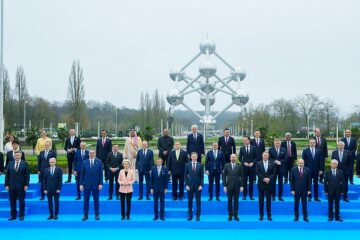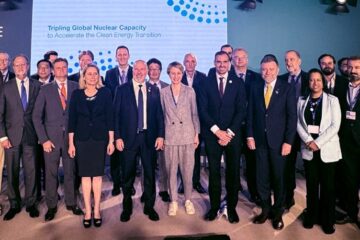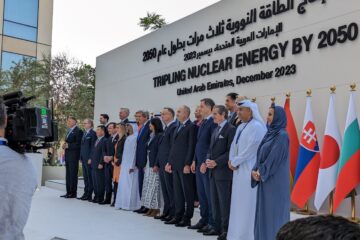In 2022 the world acknowledged that net zero needs nuclear – in 2023 it will realize it needs a whole lot of it
Early last month, Vogtle Unit 3, the first new nuclear plant to be built in the United States in decades, went critical, meaning it started to nuclear fission and move down the path to producing its first electricity and becoming operational. This was great news as the project has had a troubled history of delays and cost overruns. Once fully operational the Vogtle site will have four operating units and be the largest nuclear operating site in America.
But this was not the most important nuclear news coming out of the US this past month. On March 21 the US Department of Energy released its “Pathways to Commercial Liftoff”, a set of reports to strengthen engagement between the public and private sectors to accelerate the commercialization and deployment of key clean energy technologies. This included a report on “Pathways to Commercial Liftoff: Advanced Nuclear” in which the DOE estimated a need for an additional 200 GW of advanced nuclear by 2050 on the path to net zero. This is a huge change from the past (equivalent to tripling the current fleet) when most felt that nuclear would struggle to play an important role in the country’s future.

And the US is not the only country to set huge nuclear ambitions. In December of 2022 in Canada, the Ontario Independent Electricity Operator issued a report, ”Pathways to Decarbonization”, in which it suggested Ontario may need another 18 GW of new nuclear to complement its current 14 GW fleet.
In the UK, the government has set a target of 24 GW of nuclear by 2050 delivering about 25% of UK demand. In France, work is underway to deliver 6 new EPR units followed by another 8 by 2050 for a total of about 22 GW of new nuclear.
Meanwhile South Korea, after suffering an administration that wanted to phase out nuclear energy, is planning to expand its nuclear fleet in its 10th Basic Plan for Electricity Supply and Demand (2022 – 2036). The plan includes 6 new 1.4 GW units coming into service and nuclear reaching 34.6% of electricity generation by 2036 as coal use declines. And even in Japan, 12 years after the accident at Fukushima caused by the Great Tohoku earthquake and tsunami, has adopted a plan to extend the lifespan of nuclear reactors, replace the old and even build new ones as part of its commitment to fighting climate change.
This commitment to large new nuclear fleets is not only by countries that have nuclear power, but even those just planning their first plants. For example, Poland, Europe’s largest coal burning country, is planning at least 9 GW of new large nuclear plus a range of small nuclear power plants by 2040.
Why is this important? In the last year more and more governments have accepted that nuclear power must be part of any climate plan that achieves net zero targets by 2050. Nuclear was accepted (albeit marginally) in the European taxonomy as a low carbon technology, the UK is defining nuclear as green, and many other governments have noted there is no path to net zero without nuclear.
And then there is the war in Ukraine increasing concerns about energy security to a level not seen in many years. This is hastening the movement away from fossil dependence which further supports the energy security strengths of nuclear power.
So, if 2022 was the year that governments around the world finally embraced nuclear power as a necessary part of the path to net zero, 2023 will be the year they start to accept this means building a whole lot of it, expanding the global nuclear fleet at a pace and scale not seen before. What does this mean for the global nuclear industry as it readies itself for this massive increase in demand? This is a topic for another day.





1 Comment
bruce macdonald · April 18, 2023 at 9:48 am
Great commentary, as always.
The,
Bruce
Comments are closed.